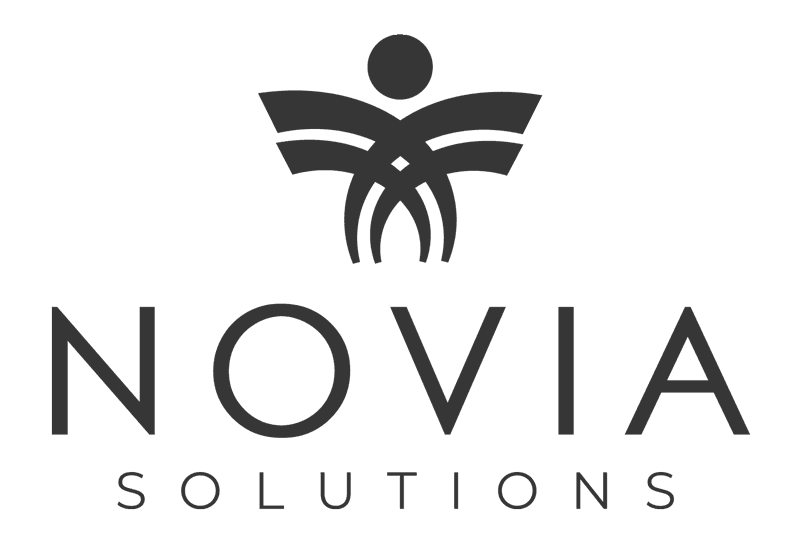Key takeaways:
- Many organizations are using screening algorithms to score resumes and determine the candidate’s fit for the job.
- Resumes should be tailored to each position in order to incorporate keywords for algorithm optimization.
- By incorporating keywords from the job posting into their resume, candidates can use algorithm optimization to increase the likelihood of their resume making it into the hands of the hiring manager.
Recently, there has been a shift in how many organizations approach the hiring process. As organizations seek to streamline hiring processes, many have turned to screening algorithms as a means of doing just that while also reducing the opportunity for human error by minimizing the possibility that the biases of hiring authorities may influence the hiring outcome. Of course, application processes can vary between organizations as well as within any organization, depending on the position. Still, one thing that remains constant throughout any application process is that it is always best practice to customize one’s resume to address the responsibilities of the position.
While some job seekers may prefer to work with a staffing agency who can send applications to hiring managers directly, others may prefer to customize their resumes themselves and apply directly to a position. As artificial intelligence begins to play an increasingly significant role in the screening process, Kathy Caprino, a contributor of Forbes magazine sat down with Dr. Jon Christensen, Chief Intelligence Officer of Sparks Research, to explore how to craft a winning resume capable of passing the test of any screening algorithm. Sparks Research conducts primary market research and business intelligence which offers insight into the data-back decision-making processes behind hiring and onboarding trends. Below is a transcript of what Christiansen shares on writing your resume so that it passes the AI test with flying colors:
So, how do recruitment/screening algorithms work anyway?
Christiansen: “Very similar to how SEO works for websites, Application Trackers and like programs use natural language processing to sift through resumes. Doing this, a program can score a resume according to a candidate’s fit for the job. The program does so largely by searching for keywords and linked phrases within the resume itself.
You will often find these keywords within the job posting. These keywords are usually the knowledge, skills and abilities a company is looking for in the ideal candidate, and often include the duties of the job. Most commonly, the most important keywords are found within the job description”.
What does ‘algorithm optimization’ mean when it comes to resumes?
Christiansen: “Just as I mentioned how the program works in searching for keywords and phrases, a candidate will want to write a resume tailored to the job itself. Ensuring the resume contains the terms that are showing up in the job description, specs and competencies. Make sure a resume hits on these keyword items.
Does the company want an individual highly competent in a specific area? Make sure to have a section that speaks to that”.
How does one know which keywords to use?
Christiansen: “There are a few things to look for. The first is the surface-level attributes, which are usually found in the job requirements. Usually the length of experience (which often includes a specific emphasis of experience), educational background desired, licenses, and other related skills. This usually shows up in the Job Specifications/Job Requirements. These are usually more observable, measurable items about a candidate. I can tell you I have a degree in Economics. It’s hanging on my wall. You can call Clemson University and verify it. But you can’t easily measure how I have lead teams or managed complex processes.
The next key clue is the background – does the candidate’s background match what we are looking for? Have they demonstrated an ability to write surveys, conduct analysis, report to senior management, etc.?
Third, there tend to be skills that are less tangible, but are highly important. Things like ‘people management,’ ‘project coordination,’ or other phrases that suggest something about an ability to execute a task. A job description might say they want a candidate to ‘manage a project from initiation through completion’. So you want to hit on how you have produced work from end to end. More sophisticated programs will have different ways of linking text to determine this is what is being communicated.
Finally, there is some level of expressed magnitude for a skill or task. This usually shows up in the form of adverbs or adjectives – some emphasis on the desire for a skill, ability, or experience. An adjective might be terms like ‘significant,’ ‘strong,’ or ‘compelling.’ An adverb might be ‘successfully,’ ‘effectively,’ or ‘efficiently.’ This also shows up in emphasized nouns, like ‘mastery,’ ‘proficiency,’ or ‘competency.’”
How important are cover letters?
Christiansen: “Highly. The job of a smart resume is to speak to the job description, job requirements, etc. The cover letter is often the product that a hiring manager will see once a candidate gets past the screening process.
The cover letter is the opportunity to speak to the job in more intimate detail in ways a resume cannot. A candidate can speak to those intangibles through experiences and stories. And speak to why he or she is a fit for the company. It is an opportunity to speak directly to the hiring manager, get noticed, and is often the key talking points when folks get in a room and decide who to bring in for an interview. A good hiring manager is going to want to see the cover letters of the top leading candidates”.
What are the most common mistakes candidates make when submitting resumes digitally?
Christiansen: “The first mistake is the obvious one: sending a generic resume that does not speak to the specific job. Sending out the same generic resume is a sure way to get called by a bunch of jobs that are just looking for warm bodies. Not exactly the ideal job. In terms of passing the AI test, candidates that go too far against the grain on a resume will make an algorithm throw up. Any artwork or images won’t do well with a computational model. Unique fonts, while cool, won’t translate well in the machine. A candidate will want to use a pretty standard template when formatting a resume. Use bullets and indention instead of tables.
Also, keep in mind that many job postings are written and search for more generalizable terms. Having a bachelor’s degree that sounds unique or a job title that was a bit creative (‘Brand Guru’) won’t do well passing the AI test.
Lastly, a candidate’s LinkedIn page is becoming increasingly important, and should be consistent with the resume. If someone in HR or the hiring manager sees two different looks in a candidate, it’s a red flag”.
What red flags should candidates be looking for when looking at job postings?
Christiansen: “When looking at a job posting, you need to read it as if this came directly from the individual you would be reporting to. If it doesn’t, then you might not want to go down that road. It’s a red flag for you. A company that doesn’t put thought into a job posting likely doesn’t have the culture to care about that job”.
What are the best practices for candidates who are interested in a position but might not meet all of the requirements listed on the job posting?
Christiansen: “To all those job seekers out there, don’t get discouraged if you don’t meet all the requirements. As I noted, these are often not “requirements” as much as they are preferences. The key is to look at the job description. If you look at it, and it fits you, then you can do that job. It doesn’t matter if they’d like a college degree and five years of experience. Companies rarely get everything they want out of a candidate, so if you don’t have 100%, that’s OK.
Use your cover letter as an argument for why you would fit. If you don’t fit the observable traits, use your cover letter to tell that hiring manager how you would be a great fit for their team, the company, and an active part of their culture. Often, postings will include details about why that company exists. Speak to how you could be an asset to making the company’s heartbeat. I’ve known folks in my field with two years of experience that is the equivalent of ten and others with twenty years’ experience doing the same thing for the last fifteen. Which one would you want to hire?”
To learn more about our clinical staffing support, visit our website to speak with a recruiter today. Or, follow us on LinkedIn to receive updates about our hot jobs.
In case you missed it:
- “I Love Writing Resumes”- Said No One Ever
- Best Practices For Resume Formatting – Ensure Candidates Are Always Putting Their Best Foot Forward When Applying For New Positions!
- Feeling Stuck? Here’s How You Can Change That
Sources: Caprino, K. (March 23, 2019) How To Write A Resume That Passes The Artificial Intelligence Test


